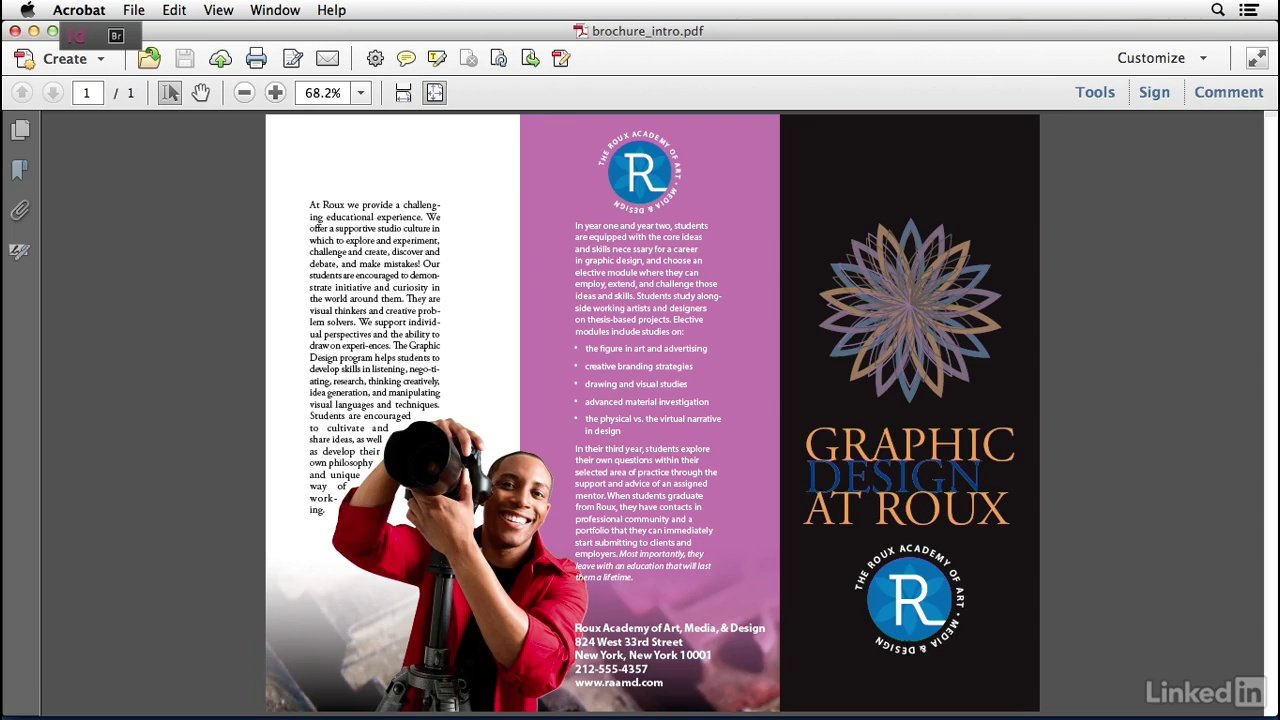
InDesign Typography explores the numerous type options, type-related features, and type-specific preferences of Adobe InDesign. Using practical, real-world examples, instructor and designer Nigel French explains the purpose of each feature and describes the conventions for how and when to use it. Part 1 focuses on “micro typography” or the appearance of individual letterforms. Nigel dissects the anatomy of a typeface and defines the terminology used to describe type in graphic design. He moves into choosing a typeface, scaling type, and adjusting spacing via InDesign’s leading and kerning controls. The course closes with a look at glyphs, special characters, and OpenType features, including ligatures and fractions. Topics include:
Over the past five years, I’ve had the pleasure of making 17 video courses with the folks at Lynda.com and LinkedIn. And the most popular courses have always been the ones on interactive documents, which have amassed over 1.25 million views—a mere 130 million behind one episode of Carpool Karaoke;) So I’m very excited to announce the release of a brand new, fully updated version of. InDesign is he coolest Adobe app, because everything that you make in Photoshop or Illustrator or even Microsoft Word, it all comes together in InDesign. InDesign is a page layout app, but that means print and interactive. Books, magazines, forms, web, PDF, eBooks, InDesign is the most important tool in publishing today. Download Lynda – InDesign Typography Part 1, 2 with Full original Files. InDesign: Typography Part 1 Part 1 focuses on “micro typography” or the appearance of individual letterforms. Nigel dissects the anatomy of a typeface and defines the terminology used to describe type in graphic design. This specific tutorial is from the series InDesign FX presented by lynda.com author Michael Rankin. The complete InDesign FX series offers 10-minute tutorial.


Creating a typographic workspace
Understanding the anatomy and terminology of type
Choosing typefaces
Sizing and scaling type
Formatting characters
Adjusting leading (aka line spacing)
Tracking and kerning
Using the Glyphs panel
Adding special characters: dashes, quotes, ellipses, and more
Using OpenType features like ligatures and fractions

source https://ttorial.com/indesign-typography-part-1
Lynda Indesign Cs6
source https://ttorialcom.tumblr.com/post/178544385913
